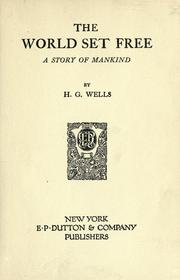
In spite of the turmoil that marked the turn of the 19th century to the 20th, this time period showcased the most advanced technology and the highest standard of living of any time in recorded history to that point. The future indeed looked bright. However, the underlying tension in the world would come to a head, and force people to look at the dark side of the prosperity and scientific advancement of the time. The events of the years from 1910-1919 would change humanity’s visions of the future forever.
History:

The reign of technology had as of yet been unchallenged when the builders of the passenger liner RMS Titanic declared their craft unsinkable. However, their hastiness proved to be tragic as the liner was wrecked on an iceberg on April 15, 1912.
Sparked by the death of Archduke Franz Ferdinand, and fueled by the increasing militarization of Europe, the Austro-Hungarians declared war on the Serbians on July 28, 1914. Allies on both sides were dragged into a conflict the likes of which had never been seen before. The scope of the battlefield, and the new military technologies, such as tanks, airplanes, chemical warfare, and advanced weaponry earned this war names such as “The Great War”, or “The World War”. The generations that lived through the war were shaped by the inhumanity and violence they had witnessed, and their worldview was shaped by it.
In 1917, the Bolshevik Revolution overturned the power in Russia, and resulted in the Soviet Union becoming the first official communist state in the world.
Science:

[The Metropolitan Opera House]
Aside from military technologies, transportation and communication continued to be developed in the 1910s.
On January 13th, 1910, the first radio transmission was broadcast from a performance at the Metropolitan Opera House in New York City.
Theoretical physicist Albert Einstein continued to turn scientific theory upside down, and published his general theory of relativity in 1915.
Another earth-shattering discovery occurred in 1919, when Ernest Rutherford successfully transmutation of an atom for the first time.
Stories:

[Frankenstein- 1910]
The 1910s saw many great science fiction classics on the silver screen for the first time. In 1910- nearly 100 years after its initial publication, Mary Shelley’s Frankenstein was adapted into a silent film. It was followed by Robert Louis Stevenson’s Dr. Jekyll and Mr. Hyde in 1913, and Jules Verne’s 20,000 Leagues Under the Sea in 1916.
Film had not displaced the written word, however, and several influential stories were released by new and beloved authors.

In 1911 Hugo Gernsback published his story “Ralph 124C41+” in serialized form in the magazine, Modern Electrics. It told the story of the protagonist, Ralph, saving the heroine from disaster using technological marvels. It was highly predictive of coming technologies. Some of the most notable predictions Gernsback made are the video phone, television, transcontinental air travel, solar energy, sound movies, synthetic food and materials, space flight, and radar.

In 1912, Edgar Rice Burroughs, who would become known for his pulp adventure science fiction stories, published the first of his Mars based stories, Under the Moons of Mars, (later known as A Princess of Mars), which introduced the iconic space traveler John Carter.

The same year, Arthur Conan Doyle, most notable for his Sherlock Holmes mysteries, published The Lost World. This is one of the last novels in the subgenre that has since been named after Doyle’s story. The Lost World tells the tale of an expedition to a forsaken plateau in the Amazon basin where prehistoric creatures such as dinosaurs still roam.

Always innovative and predictive, H.G. Wells published The World Set Free in 1914, in which he predicted nuclear weapons, and their potential effects on the world.

“The City of Endless Night” by Milo Hastings was an early tale of the dystopian genre, first appearing in serialized form in 1919. In the spirit of the post- Great War world, it described a revitalized Germany, and predicted the rise of fascism.
Keep on glowing in the dark,
Elora
No comments:
Post a Comment